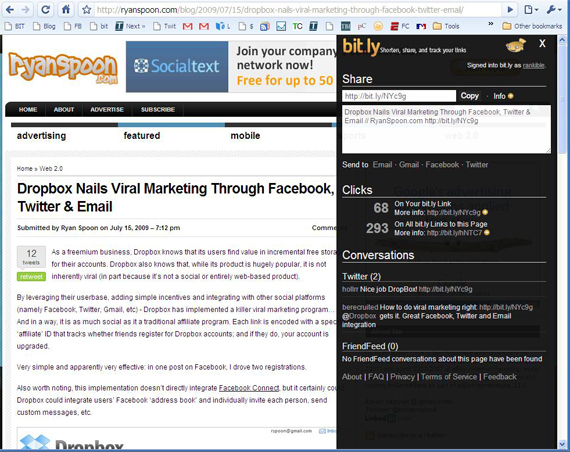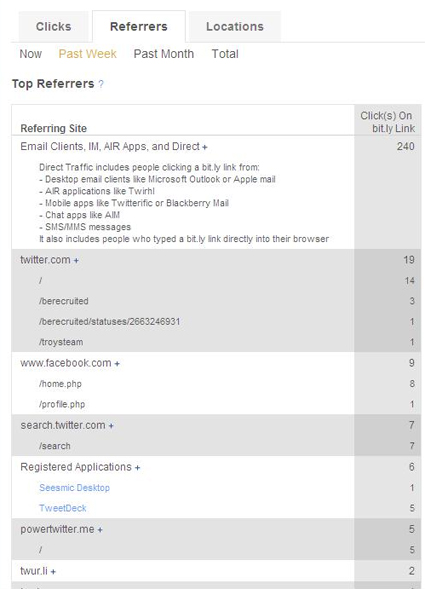For consumers, the power of the distributed web is accessing and connecting content across one’s internet usage and social graph.
For content owners, the power of the distributed web is precisely that: one’s content is distributed such that it attracts new readers and generates more traffic.
And as sites like Friendfeed and Twitter (and others) approach tipping points, they are becoming significant traffic drivers. And as sites like Twitter continue to open up via APIs and third-parties, that traffic itself is getting distributed (Twhirl, Twitterific, etc).
My point in detailing this process is that social sites like FriendFeed, Twitter and Facebook are contributing very large percentages of referral traffic - with me, for instance, Friendfeed and Twitter are becoming two this blogs largest referrals; meanwhile, Facebook delivers very targeted, high volumes of traffic to beRecruited.
As this trend grows (*and it certainly will - the question is by how much*), it will become increasingly important to understand precisely where that traffic is coming from… which is currently very, very difficult. Aggregating traffic from Twitter is damn near impossible because it comes from so many sources and applications. Here is a small subset of traffic that has arrived at this blog via Twitter:
- Twitter badges on various blogs – which mark referrals as those blogs
- Twitter.com (via different Twitter accounts / pages)
- 3rd party apps (which represent a massive portion of Twitter’s usage): Twhirl, Twitterific, etc
- Gtalk: which is marked as direct traffic
- SMS-to-Mobile-Web: again, marked as direct traffic
- Social / Status Feeds on sites like Facebook
Tough to keep straight.
Even tougher to understand what the true amount of traffic being delivered from these sites are. Consequently, it’s also tough (and near impossible) to understand the value of those sources and how much focus I should spend on acquiring traffic from those sources.
These questions are currently overlooked because the traffic levels are growing, but are still relatively small. But what happens when they represent 20% of your traffic? Those sorts of numbers have enabled an entire industry to exist around SEO.
So as I think about services I’d pay for - and as sites like Twitter think about business models - perhaps we’ve arrived at a start. I am not a believer that the two prominently discussed models will work (ads in streams and subscriptions). But, I would be willing to pay (and perhaps handsomely) for data around my account, users, content and traffic…. Because right now it’s a black box.




